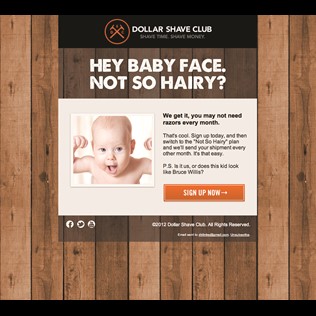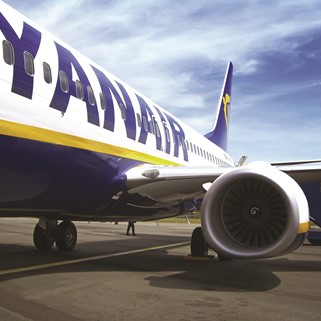
MATERIAL DISTORTION
Communicating in a disruptive world presents challenges related to competition, digital and reputation management. Brittany Golob analyses the impact of disruption on businesses
In mid-February, Transport for London (TfL) released the results of its month- long study into passenger movement within stations and across the London transport network. It used its existing wifi access points to ‘trap’ individual devices that had their wifi turned on and therefore track the user’s journeys.
From this, TfL can apply data analysis not only to a better understanding of crowding issues and staffing needs, but to improve its insights for advertisers. This is but one of countless uses for data analysis cities and public organisations around the world are using to move toward becoming smarter cities.
Smart cities are evolving partially to avoid the deterioration of public services. Private organisations though, are faced with the challenge of adapting in the face of disruption and surviving the transition to a fully-connected society.
“Data is everything now,” Rob Bownes, director of communications at data science consultancy Profusion, says. “If you are a PR or marketing professional, you need to be able to understand the analytics behind what is actually going on. Every company deals with so much data that if you’re a legacy organisation that is being challenged by a disruptor, having your data analysed in such a way that you can work out what your customers want can help future-proof you against disruptors.”
Forbes calls disruption a force that is “at once destructive and creative.” It’s about making an innovation that can force through sector-wide change or can inspire changed thinking among competitors. Abhinav Kumar, chief communications and marketing office for Tata Consutlancy Services (TCS) in Europe, says disruption is omnipresent. “If nothing else,” he says, “2016 needs to be called the year of disruption.” For that reason, TCS chose to use the Davos World Economic Forum in January to focus on disruption with a microsite called #DigitalEmpowers. The site includes a wealth of insights and commentary on different aspects of disruption in all industries.
Traditional brands, though, are not working hard enough, says Maddy Cooper, founding partner of marketing consultancy Brilliant Noise. “Disruptors are often able to adapt, to change direction, take knocks and setbacks and come back stronger,” she says. “In short, they are resilient brands.” Because of that, she says they are changing their markets and instituting a new, digitally-focused business models. Digital, for many, tends to be the main area of focus when considering what makes a brand disruptive.
However, it’s not necessarily only digital businesses that are disruptors. For some, it’s about the most effective application of data science or digital communications. For the London South Bank University, recognising the shift in learning environments toward a more interactive, virtual experience, led to it working with digital consultancy Squiz to create a new digital presence that is “seamless, relevant and easy-to-use,” according to Squiz’s co-founder Steve Morgan. Changing the student experience, Morgan says, has allowed the university to surpass its competition in terms of digital and position itself as a disruptor in the education space.
Similarly, online influencer network Youzz focuses on its constant digital development to meet the expectations of its stakeholders. It has taken market insights that show its consumers would prefer a community-based approach to communications to heart, says Francisco Ascensão, CEO of Youzz, a decision that should allow it to be more flexible in terms of future shifts in the market. Others, like Pocket App, are using already disruptive models to change new industries. Pocket App has, through Bookee, reimagined the user experience of betting apps with the ease of use of Tinder and its compatriots in mind.
“User experience is one of the most important ways to distinguish yourself from competitors,” chairman of Pocket App Paul Swaddle says.
Bownes adds that flexibility and simplicity are what smart communicators get right. Using consumer insights and data analysis of marketing and communications efficacy will help all organisations – disruptive or traditional – better understand their stakeholders and thus build more loyalty, develop broader awareness and increase the overall reputation of a business.
Researching disruption, Squiz found that 70% of 202 business leaders in the UK think that innovation through digital is the key to ongoing competitiveness. But, that doesn’t mean a business must be digital in order to succeed – or to disrupt.
Some of the most successful disruptors are not primarily digital companies. EasyJet and Ryanair rocked the airline business in the 1990s after the deregulation of the European industry. As of 2013, low-cost carriers own 32% of the market share of departures in Europe, more than double their 17% market share in 2005.
 |
 |
Tesla – which has reinvigorated the demand for electric vehicles – has a two-year, 400,000 person-long waiting list for its Model 3 car. Its success relies on a brand strategy that may force traditional businesses in the automotive industry – and beyond – to change. Tesla has focused on a peer-to-peer model of building awareness, as well as making its showroom, digital and in-car experience unique in the auto industry.
Service and experience have become two of the hallmarks of a successful business and two of the qualities that allow disruptors to succeed. Some, like Graze or Bookee, focus on personalisation as well.
Eight year-old Ovo Energy has taken on one of the most staunch and truculent industries in the UK – utilities. The brand was born from the desire to make an energy company more transparent, simple and experience-driven. “Ovo started as an idea around the kitchen table. A couple of friends listing what they wanted from their energy supplier but weren’t getting. Things like fair pricing, great service, clear and simple information. Technology to make managing your energy easier. And above all, honesty and openness,” says communications director Katie Thompson.
That ethos still forms the brand’s positioning and strategy. With 680,000 customers and two years at the top of the Which? customer satisfaction survey, it seems to be working. Thompson says, “Ovo’s guiding principles are simplicity, transparency and fairness in all of its operations, namely communications. We ensure that all our comms channels are reflective of this, as we believe that our customers are our best advocates.” Its focus on service and experience is akin to other disruptors. But the revolution is not only taking place in Ovo’s Bristol HQ. The company’s position on the energy industry is clear. “We have sought to demystify the complexities of the energy industry and to fix the broken parts of the customer experience to make it easier, simpler and fairer for all,” Thompson says.
The Which? survey indicates that change is needed. Smaller companies are leading the pack in terms of service and clarity and accuracy of billing. The highest ranking member of the Big Six is E.On, which scores a middling 57% and ranks at 14th in the UK. Following E.On are British Gas and SSE. Npower is dead last at 23rd with a 44% score.
Breaking the makeup mold
Subscription boxes have disrupted the cosmetics industry, but not in a way that’s expected. Michelle Guo reports
A few years ago, the concept of subscription boxes was a whimsical notion. Today, the review platform My Subscription Addiction estimates 11m subscribers in the market, though the typical subscriber subscribes to seven boxes on average. This disruption is forcing traditional retailers to adapt and shift its footing in a new playing field.

Established retail brands, on the other hand, have more stability and often see creating subscription boxes as a way to extend their existing product lineups. There is also pressure to keep up with rising startups targeted at the same audience, and major brands have taken note, especially in the beauty industry. Sephora, one of the world’s largest cosmetics retailers, launched its own Play! by Sephora box to stay relevant in an era of endless beauty boxes, and so have Target and Walmart. Subscription box companies like Birchbox and ipsy have helped their competition by encouraging customers to buy full-size versions after sampling them. Research firm Slice Intelligence’s data shows that Sephora has seen a 5% boost in sales from shoppers subscribed to Birchbox’s subscription service, and beauty retailer Ulta a 6% boost.
Consumer product conglomerates have started using the subscription e-commerce model to level with competition. Unilever bought Dollar Shave Club, which has 3.2m members, for $1bn, sharpening its rivalry with P&G. According to Fortune, just five years since Dollar Shave Club launched, P&G’s North American market share in razors and blades dropped from 71% to 59%. Meanwhile, the Wall Street Journal reported that the Dollar Shave Club made $140m, or almost 40% of online web sales in men’s shaving gear. Though P&G commands more than 60% of the retail market, online, it only accounts for a fifth of the pie.
Though conglomerates still dominate the traditional, offline marketing scene, startups are disrupting these players when it comes to brand building through social media. They go beyond merely addressing customer complaints to create communities, set lifestyle trends and connect to Millennials.
“Disruption is all about brands and businesses that enter a marketplace and deploy a business model shift, resetting rules and expectations,” global brand consultancy Dragon Rouge’s global insight and innovation director Kate Waddell, says. Disruptors may destroy their categories in order to innovate. They may provide a cheaper solution, but it’s a solution grounded in improving the existing state of the industry.
For communications professionals working for these disruptive businesses the first challenge is in determining the brand’s reason for existence. That then informs the brand positioning. However, what experts warn against is over-using terms like ‘disruptor’ or ‘innovative’ or ‘ground-breaking.’ The products and services should speak for themselves. Bownes says that successfully building a new brand, particularly in the B2B space, relies on trust. Building that trust means compiling case studies and working with the media in publications relevant to a company’s audience. He says many companies focus too much on getting noticed by the tech or startup press, when they should be looking at what their customers actually read.
“Disruptors are often able to adapt, to change direction, take knocks and setbacks and come back
stronger. In short, they are resilient brands”
For those in traditional businesses, communicating when a disruptor impacts their industry may force a deeper look at the brand’s positioning, its ability to effectively target stakeholders via communications and its understanding of what its customers actually want.
Yet, the other challenge is disruption on the part of digital technology. Kumar says this is something businesses of all sizes are now forced to recognise and address. The Squiz study points out that 34% of UK business leaders don’t do enough to encourage digital innovation. “From a business point of view, there are challenges that the new technologies have put on the communications cycle,” Kumar says. He says airline response times on social media are prime examples.
For airlines, response times that used to be measured in hours or days are now measured in seconds. Slow responders take two hours to address a tweet. This also points to a sluggishness in terms of developing good social listening strategies. “You can’t manage the crisis you don’t know about and communications directors’ challenges involve the proliferation of social media. You need to keep evolving. For communication departments, crisis is the new normal,” Kumar says.
But, disruption is not only for startups. Disruptors are not all Shoreditch techies. Disrupting an industry is not only done by a small business with a great idea.
Transport for London is 17 years old, has 28,000 employees and runs the oldest underground system in the world. Its approach to digital is agile, innovative and disruptive. All its data is open-source and its digital communications are clear and multichannel in nature. It responds to the challenges that disruption places on it and innovating its uses of technology. And its communications throughout are transparent, clear and authentic. It could be a disruptor or the disrupted, but its agile response will allow it to survive in a changing climate.



